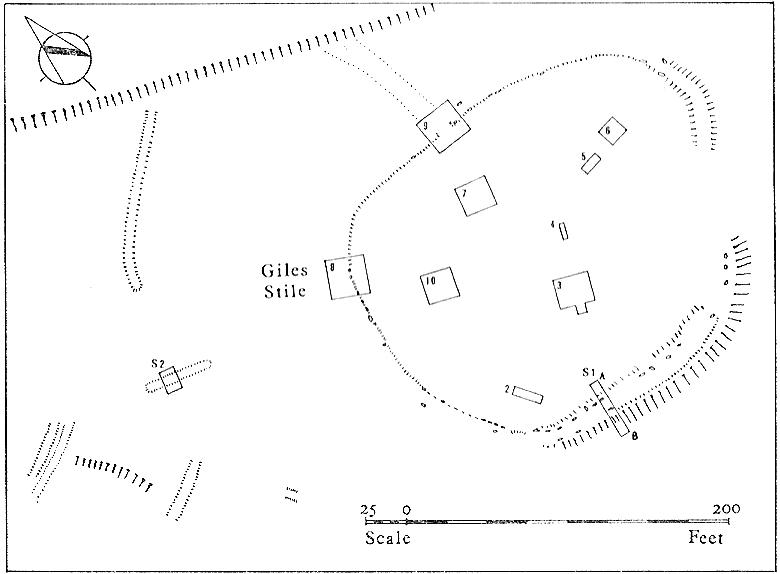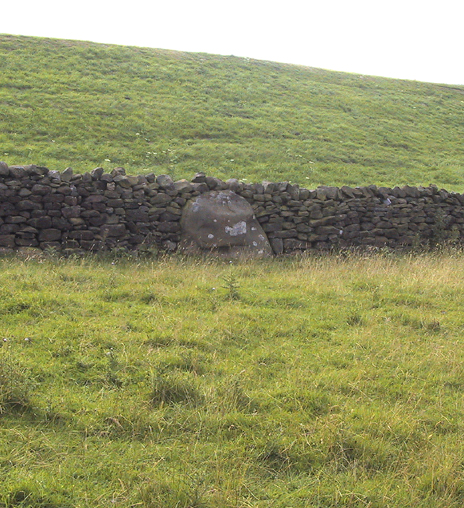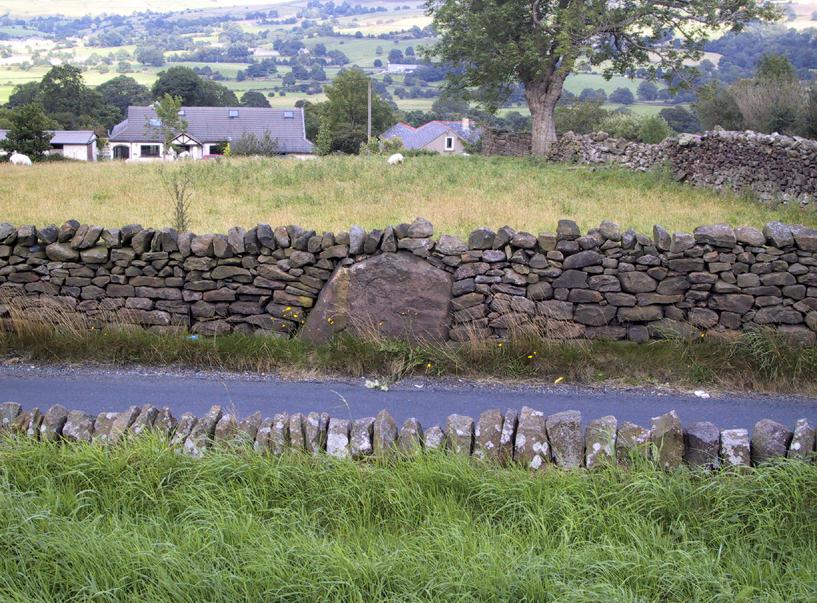Enclosure / Settlement: OS Grid Reference – SE 1186 3859
Along the main Aire Valley road (A650) between Cottingley and Bingley, turn right by Beckfoot Grammar School and wander along and up the winding road, over the canal bridge where the Fisherman’s pub is on Primrose Lane. On the slope above you amidst the scatter of trees on the left-hand side of the road is this Romano-British site (the map below should help). Check it out!
Archaeology & History
Excavated in the 1960s by the archaeologist P. Mayes, this little-known but reasonably well-preserved enclosure-cum-settlement comprises of a large oval of stone walling, double in places, about 200 feet across at its widest point.


Thought to have been constructed sometime between the Iron Age and Romano-British period, for some reason one of the stones on the western edge has long been given the name of the ‘Giles Stone’ or Stile — though nobody knows for certain why. It’s about three-feet tall with a smaller upright by its side. Any other remains that might once have been here were destroyed by the housing estate that sits above here. When Mr Mayes (1967) and his associates did their work here, cutting across sections of the walling, he told:
“The best preserved section of wall was amongst the trees on the lines of the south wall of the enclosure and included the boulders of both the inner and the outer faces of the wall. A trench 6ft by 38ft was laid out at right angles to it. The turf was removed showing the boulders of the wall with the smaller stone filling between them. On either side of the wall was a relatively small quantity of loosely tumbled stones, the angle of rest of which suggested the wall as their source of origin… Careful examination of the wall filling failed to show any sign of post settings.”
Mr Mayes said that it was “doubtful whether the Crosley Wood site, dated by one pot to the late 3rd or early 4th century AD, was ever conceived of as an occupation site.” In reference to his excavations he continued, “Certainly no evidence of settled living was found” here, concluding:
“It seems probable that the main enclosure at Crosley Wood served as a cattle pound; its defensive potential being invalidated by the scarp to the north, whilst the short stretches of external walling are all that remains of a rectilinear field system for arable or pastoral farming.”
References:
- Mayes, P., ‘Excavations at Crosley Wood, Bingley,’ in Yorkshire Archaeology Journal, volume 42, 1967.
© Paul Bennett, The Northern Antiquarian
The map could not be loaded. Please contact the site owner.

